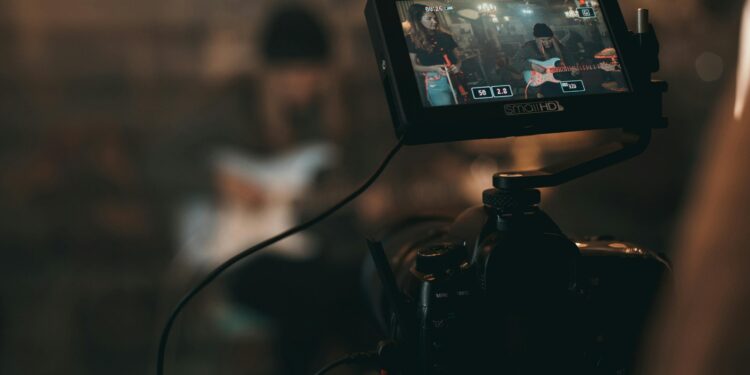The Evolution of Live Music Streaming: From Stage to Screen

Once upon a time, attending a concert meant buying a ticket, waiting in line, and standing shoulder to shoulder in a packed venue. Today, millions of fans experience the same thrill with nothing more than a smartphone and an internet connection. The rise of the live stream has fundamentally reshaped how music is shared, consumed, and celebrated.
Platforms like YouTube, Twitch, and TikTok Live have transformed concerts into borderless events, where audiences can interact with performers and each other in real time. From stadium tours broadcast globally to bedroom artists building careers through live online sessions, live streaming is redefining what it means to “go to a show.”
Why Live Stream Concerts Took Off
The evolution of live-stream concerts didn’t happen overnight. Several cultural and technological shifts set the stage:
- High-speed internet access – Faster connections have made it possible to broadcast and watch live music without interruptions.
- Social platforms scaling up – Tools like YouTube Live, Twitch, and TikTok Live allow artists to reach fans instantly.
- Pandemic acceleration – Lockdowns in 2020 forced artists to experiment with digital shows, proving that demand for live concert experiences online was massive.
- Fan interactivity – Unlike physical concerts, live streaming integrates features like real-time chat, polls, and digital tipping, making audiences part of the performance.
The combination of necessity and opportunity pushed live-stream events into the mainstream, and they’ve only grown since.
YouTube: The Global Stage
YouTube has long been the home of music videos, but its live stream functionality has elevated its role in the industry. Major festivals now broadcast directly through YouTube, reaching audiences of millions who could never attend in person.
For independent artists, YouTube Live offers a low-barrier way to perform for fans, monetise through ads or donations, and archive the show for replays. The platform has effectively blurred the line between local gigs and global concerts.
Twitch: From Gaming to Gigs
Once seen as a niche hub for gamers, Twitch has become a major destination for live-stream events in music. DJs, bands, and solo artists use the platform to host regular sets, interacting directly with fans via chat while streaming performances in real time.
Twitch stands out because it thrives on community. The combination of live emotes, tipping systems, and subculture-friendly vibes has made it particularly appealing for genres like electronic music and indie pop, apart from the usual cosy games, FPS, and podcasts.
A Twitch show feels like hanging out in a digital venue—intimate, playful, and interactive.
TikTok Live: Gen Z’s Concert Venue
TikTok already dominates short-form video culture, but TikTok Live has turned the app into a serious competitor for live concert experiences. Emerging artists often use live sessions to promote singles, interact with fans, and even host full-on performances.
Because TikTok’s algorithm favours discovery, musicians can attract entirely new audiences simply by going live. For Gen Z, “going to a concert” increasingly means joining a live stream on TikTok, where the boundary between fan and performer feels thinner than ever.
The Hybrid Era of Concerts
As live venues reopened, many predicted that live-stream events would decline. Instead, we’ve entered a hybrid era, where concerts combine physical presence with digital broadcasting.
Fans can attend in person or watch live from across the world. Major artists like BTS, Billie Eilish, and Coldplay have embraced this model, selling digital tickets alongside physical ones. The result? More inclusive access and expanded revenue streams for artists and promoters.
Hybrid concerts also allow for creative storytelling—multiple camera angles, backstage access, and even VR experiences—things you can’t get from the nosebleed seats in a stadium.
More than ever, it’s become common to have a replay or even a telecast of a live concert while fans are having a dedicated watch party, playing in live game lobbies, doing chores, or even studying. This hybrid era of live entertainment has seen numerous activities integrated into the live music experience.
Live Concerts Reimagined
What makes a live concert streamed online different from one in a stadium? Beyond accessibility, it’s about interactivity. Viewers don’t just watch passively; they influence the experience.
- Real-time polls can decide setlists.
- Fan comments can be read aloud by performers.
- Virtual meet-and-greets allow fans to talk directly with their favourite artists.
This level of engagement is impossible in a 20,000-seat arena but thrives in a live stream setting. The intimacy, even with thousands of viewers online, makes the experience feel personal.
The Economics of Live Stream Events
The rise of live-stream events has opened new revenue models for artists. Ticketed streams, merchandise integration, virtual tipping, and brand partnerships all contribute to monetisation.
For smaller musicians, streaming shows are more affordable to produce than full tours, lowering barriers to entry. For larger acts, digital broadcasts add millions to existing tour revenue, while also reaching fans in regions not included on tour schedules.
This democratisation of performance has allowed both emerging and established artists to thrive in new ways.
Challenges and Limitations
Despite its benefits, live streaming music faces hurdles:
- Technical issues – Poor connectivity or platform glitches can ruin an event.
- Over-saturation – With so many artists streaming, standing out can be difficult.
- Lost physical energy – For some fans, no live concert stream can replace the atmosphere of being in a crowd.
- Monetisation gaps – Smaller acts may struggle to translate views into sustainable income.
As the industry evolves, platforms must refine technology, ensure fair monetisation, and find ways to recreate the magic of physical presence in digital form.
The Future of Live Music Streaming
Looking ahead, the live stream concert space is only set to expand:
- Virtual and augmented reality – VR headsets will allow fans to feel like they’re on stage, not just watching from a screen.
- Global collaboration – Artists from different continents can perform together in real time, creating cross-cultural fusion shows.
- Interactive ticketing – Exclusive tiers may include backstage access, digital souvenirs, or one-on-one chats.
- AI personalisation – Live streams may soon adapt in real time, tailoring visuals, fancams, or sound mixes to individual viewers.
What’s clear is that the next frontier of live stream events will be about immersion, not just accessibility.
From Stage to Screen to Everywhere
The live stream has changed music forever. What started as a necessity during lockdowns has become an integral part of the music industry, giving fans new ways to connect and artists new avenues to perform and earn.
Whether it’s watching a live concert from a stadium tour on YouTube, vibing with a DJ set on Twitch, or catching a spontaneous jam session on TikTok Live, audiences no longer need a ticket or a venue—they just need a screen.
The evolution of live streaming proves one thing: music has always been about shared moments, and now those moments transcend geography. The concert of the future is not bound by walls or borders—it’s wherever the internet takes us, in real time.








